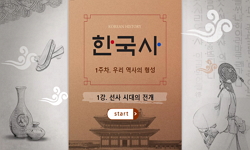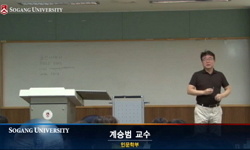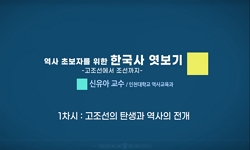Introduction: The purpose of ancient DNA (aDNA) study is to provide scientific clues to the solution of various problems that have not been resolved through analysis of DNA extracted from living organisms. However, since the soil of Korea is constitut...
http://chineseinput.net/에서 pinyin(병음)방식으로 중국어를 변환할 수 있습니다.
변환된 중국어를 복사하여 사용하시면 됩니다.
- 中文 을 입력하시려면 zhongwen을 입력하시고 space를누르시면됩니다.
- 北京 을 입력하시려면 beijing을 입력하시고 space를 누르시면 됩니다.
https://www.riss.kr/link?id=T14618685
- 저자
-
발행사항
서울 : 서울대학교 대학원, 2017
-
학위논문사항
학위논문(박사)-- 서울대학교 대학원 : 의학과 2017. 8
-
발행연도
2017
-
작성언어
한국어
- 주제어
-
DDC
610 판사항(22)
-
발행국(도시)
서울
-
기타서명
조선시대 무덤에서 발굴된 사람 시료를 대상으로 한 고유전자 연구
-
형태사항
삽화 ; 26 cm
-
일반주기명
참고문헌 수록
- DOI식별코드
- 소장기관
-
0
상세조회 -
0
다운로드
부가정보
다국어 초록 (Multilingual Abstract)
Introduction: The purpose of ancient DNA (aDNA) study is to provide scientific clues to the solution of various problems that have not been resolved through analysis of DNA extracted from living organisms. However, since the soil of Korea is constituted such that bodies are likely to decay rapidly, aDNA extracted from bodies long-buried in tombs is usually considered to be in a poor preservation state; thus, it is likely that failure will be the result if the aDNA is used for genetic analysis. In this study, therefore, I tried to establish a method of aDNA analysis on human remains buried during the Joseon Dynasty. Also, I applied the established method to archeological samples for confirmation of whether or not aDNA analyses could be useful in the field of archaeological science.
Methods: The samples used for this study were ancient skeletal remains, teeth or mummified brains found in lime-soil mixture barrier (LSMB) tombs constructed during the Joseon Dynasty in Korea. All of the samples were subjected to sex determination using archaeological, anatomical, or genetic methods. aDNA from the archaeological human remain samples was isolated using a phenol extraction method and quantified by spectrophotometry or the real-time polymerase chain reaction (real-time PCR) method. After PCR, cloning and sequence analyses of mitochondrial DNA (mtDNA) hypervariable region (HVR) or short tandem repeat (STR) analyses of nuclear DNA were performed for determination of the preservation state of the aDNA, sex determination, human identification, and contamination control.
Results: The preservation state of the aDNA was analyzed with the AmpFlSTR® Identifiler® PCR Amplification Kit (Identifiler kit) and AmpFlSTR® MiniFiler™ PCR Amplification Kit (Minifiler kit) using DNA extracted from femur samples from eight sets of Joseon skeletal remains. In the analysis using the Identifiler kit, the extracted aDNA showed such a poor preservation state that the subsequent STR analysis failed in most of the loci. However, in the STR analysis with the Minifiler kit, which was designed to reduce the amplicon size on the eight largest loci in the Identifiler kit, the success rate of the locus analysis was more than twice as high.
Also, I investigated whether morphologically well-preserved mummified brain tissue is more valuable as a sample for aDNA analysis than the femur samples that are commonly used as compact bone in aDNA analysis. The Minifiler kit analysis confirmed that the success rate of STR locus analysis using mummified brain samples was higher than that using femur samples. In addition, I found that, in the mtDNA analysis, the aDNA extracted from the mummified brain tissue could allow for larger-sized PCR amplicons than could the femur. Given these results, mummified brain tissue could indeed be a valuable material for aDNA analysis.
Next, I examined whether aDNA analysis could be helpful in sex determination of controversial archaeological samples. Using archaeological or anatomical methods for a total of 34 individuals buried during the Joseon Dynasty, the sex of five individuals could not be determined anatomically, while another two individuals showed discordant results between the archaeological and anatomical methods. In the results of amelogenin gene analysis on the samples, four of the five individuals for whom the sex could not be determined were confirmed, as three women and one man. Meanwhile, the sexes of the two individuals for whom the results by the two methods were discordant also were confirmed (i.e., the anatomical sex determination had been correct).
Finally, I conducted an investigation to determine whether teeth found in a pocket were those of the individual found in that coffin or another person’s. The aDNA techniques used in my thesis were applied to solve this problem. The Minifiler kit was used for analyzing eight STR loci and sex determination based on mummified brain and femur samples obtained from the mummified human remain. Then, those STR analysis results were compared with the results for the teeth. In fact, the alleles analyzed in the mummified brain, femur, and tooth samples were quite similar to each other. Additionally, the results of a sequence analysis of mtDNA HVR1 confirmed that all of the nucleotide sequences analyzed from the mummified brain, femur and teeth were 100% identical to each other. Considering these genetic analysis results, it is almost certain that the owner of the teeth found in the pocket was most likely to be the mummified human remain buried in that same coffin.
Conclusions: Through this study, I was able to investigate the preservation state of aDNA extracted from archaeological human remains buried in LSMB tombs constructed during the Joseon Dynasty and to establish a research method for analysis of aDNA. And, I confirmed that morphologically well-preserved mummified brain tissue can be a useful material for aDNA analysis. Next, I showed that sex determination and individual identification on archaeological human remains could be successfully accomplished using aDNA analysis methods. Considering that aDNA analysis is still relatively novel in Korea, I hope that my thesis will be helpful to archaeological scientists who are interested in aDNA studies.
목차 (Table of Contents)
- Abstract
- Introduction
- Chapter 1. A study on the preservation state of aDNA extracted from skeletal remains buried during Joseon Dynasty
- Chapter 2. A comparative study on the preservation state of aDNA extracted from the femur and mummified brain found in the tomb of Joseon Dynasty
- Chapter 3. A study on the usefulness of aDNA analysis in sex determination of ancient human remains
- Abstract
- Introduction
- Chapter 1. A study on the preservation state of aDNA extracted from skeletal remains buried during Joseon Dynasty
- Chapter 2. A comparative study on the preservation state of aDNA extracted from the femur and mummified brain found in the tomb of Joseon Dynasty
- Chapter 3. A study on the usefulness of aDNA analysis in sex determination of ancient human remains
- Chapter 4. A study on the funeral rites of Joseon society using the aDNA analysis to bone and teeth found in the same coffin
- Conclusion
- Bibliography
- Abstract in Korean 156













